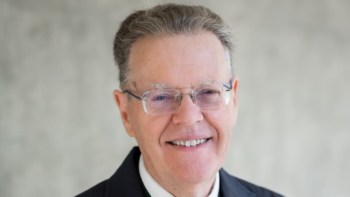Andrea Armani is a chemical engineering and materials science professor at the University of Southern California, US. This post is part of a series on how the COVID-19 pandemic is affecting the personal and professional lives of physicists around the world. If you’d like to share your own perspective, please contact us at pwld@ioppublishing.org.

As the leader of a materials science and engineering laboratory, my office – situated in the middle of a sea of experimental spaces, white boards, and group member desks – was rarely quiet before the pandemic. The murmurs of derivations from the white boards and the swinging of the doors to our optics and synthetic chemistry labs provided a constant background hum. And although I am trained as a physicist, the members of my group come from numerous scientific and engineering backgrounds, creating a rich, dynamic research environment.
During the past year, these noises and interactions have vaporized. As I work from the isolation of home while my group members perform research (at significantly reduced capacity) in the lab, our entire research environment and lab culture have been transformed. New synthetic pathways no longer decorate the wall outside my office door, and students no longer rush into my office to show me their latest laser threshold data. But the daily coffee breaks and walks also stopped. More recently, the more significant celebratory milestones, like graduation and holiday parties, have been postponed. And while this stark, sudden shift had a huge and immediate impact on productivity, it also led to a slow, continued erosion of mental health.
Seeking practical solutions
Universities are trying a wide range of strategies to address this erosion, some of which are more successful than others. Loneliness is already a challenge for science and engineering students for many reasons, including struggles with imposter syndrome, issues with advisor(s) and being unable to travel home due to visa restrictions. COVID-19 is amplifying these issues, making it more important than ever to try to find practical solutions.
In my case, I took inspiration from the healthcare sector and decided to bring in a mental health therapist to lead a weekly discussion group for my lab. There were several practical challenges associated with this decision, including finding someone who is skilled in and willing to work with the STEM/education sector (and PhD students specifically), paying that person and getting student buy-in.
To overcome the first hurdle, I reached out to my personal network as well as a range of potential contacts on social media (yes, I said social media). Through them, I found a person who had previously run similar groups. As far as payment, I paid “out of pocket”, meaning I paid them directly. As a principal investigator, I value my students’ health and well-being, and I feel it is my responsibility to ensure their success. To get student buy-in, I dedicated workday time to the discussion group to emphasize that I believed it was important. Although attending the group was completely optional, I explained why I felt group sessions and the group format were a good approach and why I valued therapy, as part of an attempt to normalize it.
Specialized support
We are now finishing our second month of these sessions, and when I asked my group if they wanted to continue, the answer was a resounding “yes” for several reasons. Although the university does offer similar groups, they are typically attended by students from many disciplines. As a result, the therapists are not trained in engineering-specific challenges, and the discussants are not all engineers. The result is that the students end up feeling even more isolated than they already were.

Physics in the pandemic: ‘Our mission was to include young nuclear physicists wherever they were in the world’
While I do not attend our group’s sessions, I know that my group members discuss a wide range of topics, both pandemic-related and otherwise. Given the pressure that many of them are feeling, it is very important to provide them a place to express their concerns related to screening/qualifying exams, research and academic progress, housing and finances, and family. And this environment needs to be with their colleagues who can empathize with and support them, as well as with a therapist who can lead a constructive discussion. I also encouraged my students to use the therapist to alert me to any concerns they have with the university or with me that they do not feel comfortable bringing to my attention directly. In other words, the therapist can act as their advocate. This advocacy role (as well as my lack of experience in psychology) is one reason why I decided not to lead these groups myself.
Creating this resource for my group has presented many challenges, but I am hopeful that the school of engineering will continue the initiative post-pandemic. To ensure our students’ academic and research success, it is critical to care for both their mental and physical health. This requires engaging the students to provide them with the resources they need, not the resources we think they need.



